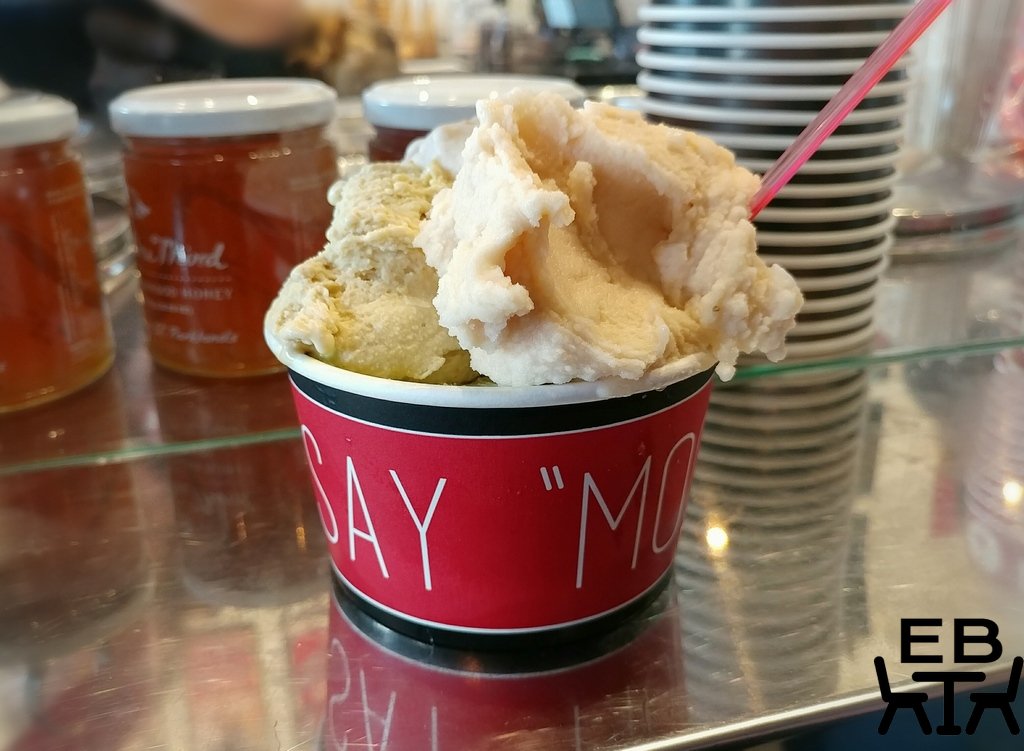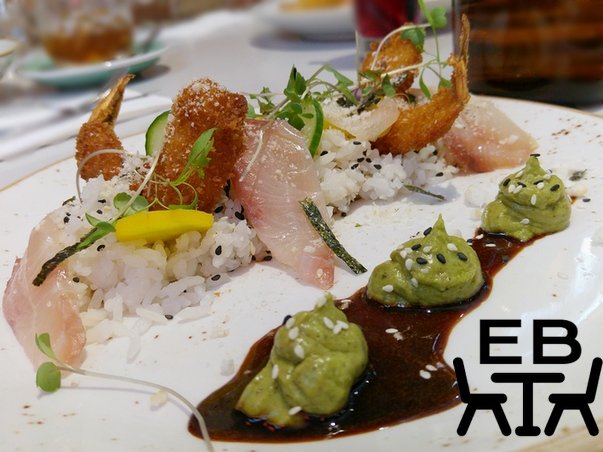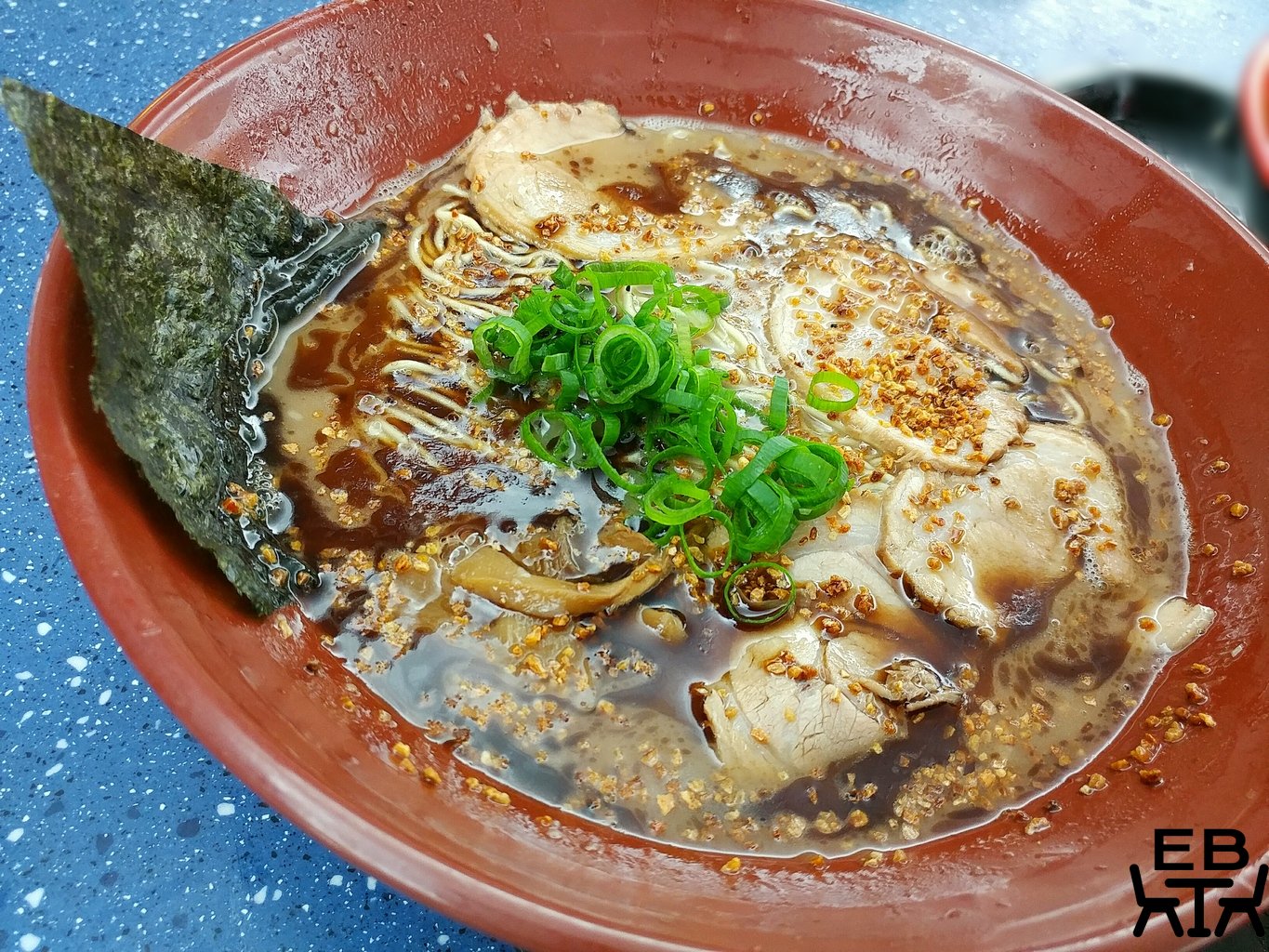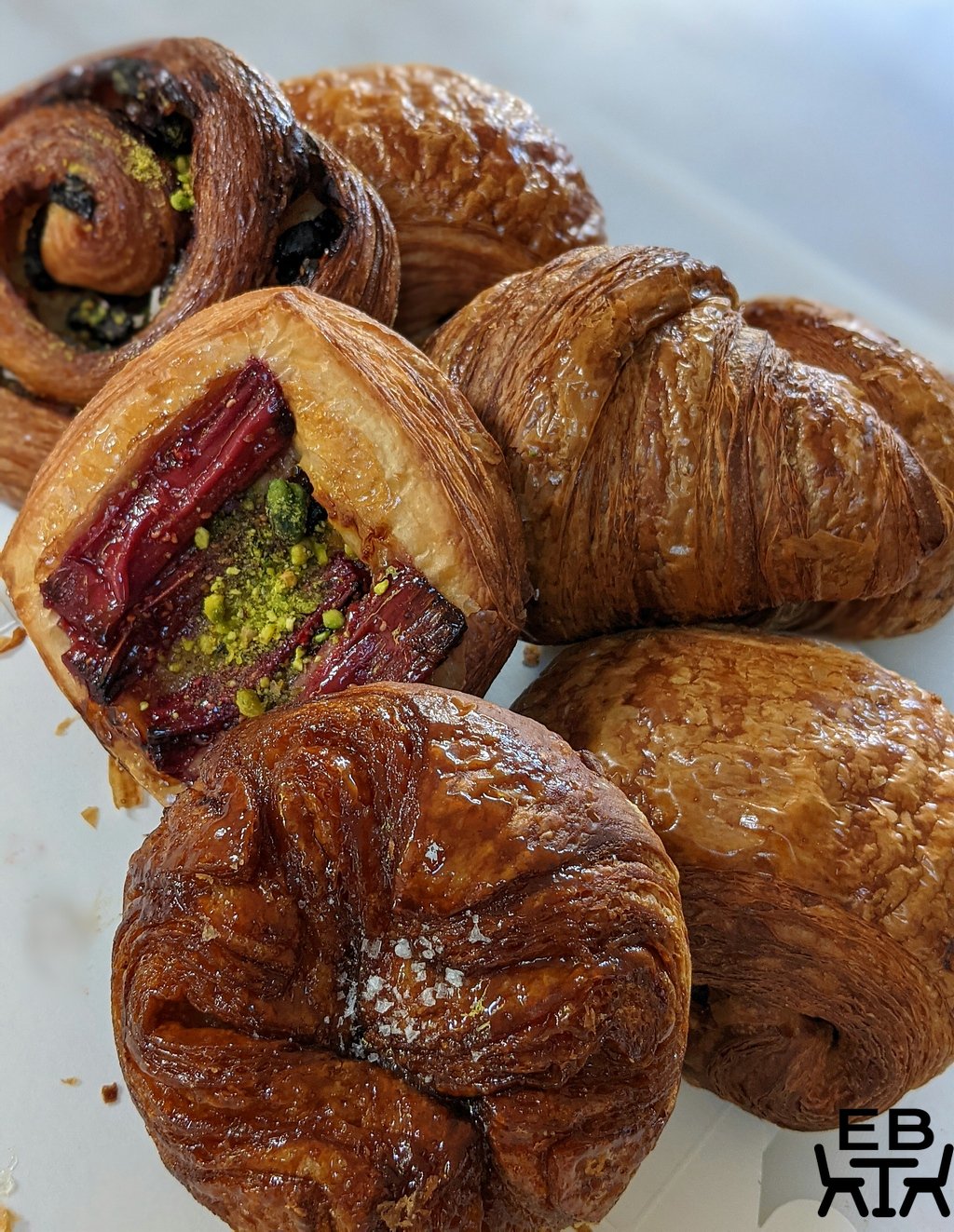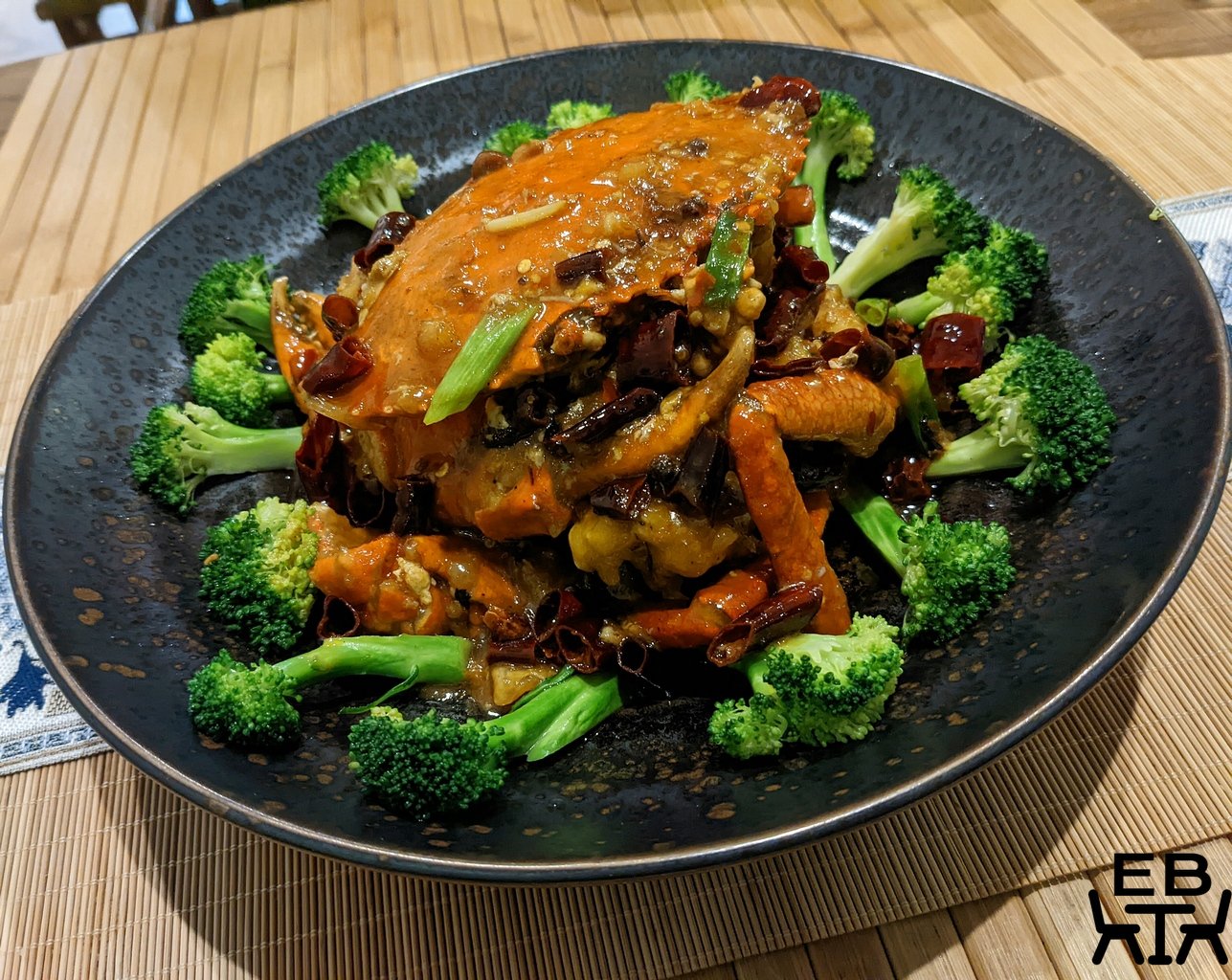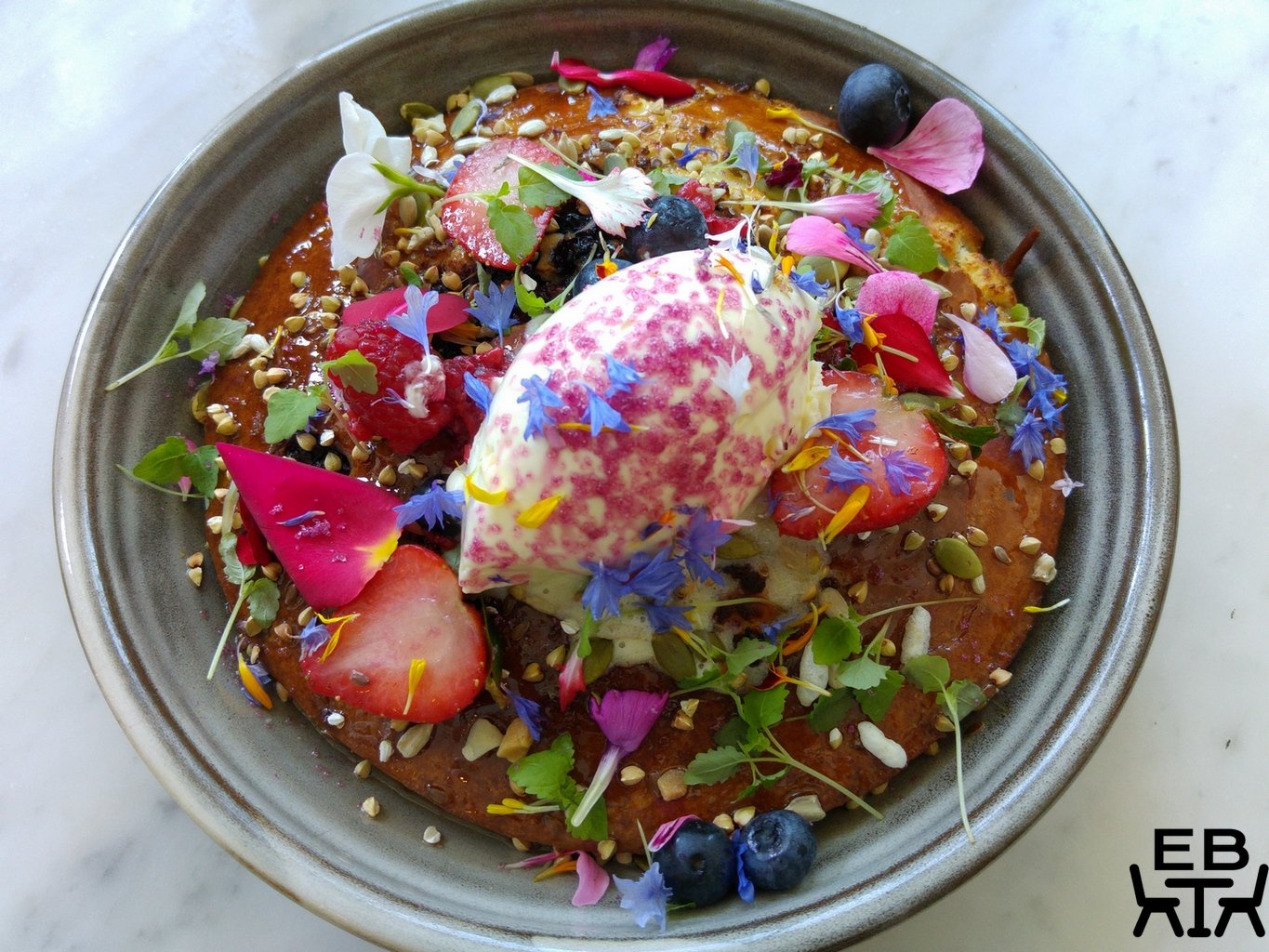Last updated on June 28, 2022
We were curious about the culinary concept behind Sunda Dining – stated to be a combination of Southeast Asian flavours and native Australian ingredients. We have tried plenty of fusion dishes in lower key brunch contexts (check the “fusion” tag for other posts), but wondered what a fine dining take on it would be.
As is pretty typical for a voguish Melbourne dining spot, Sunda isn’t on a busy trafficked road, but tucked away in Punch Lane. In contrast to its cuisine notes (we associate Southeast Asian with warm and immersive – not going to use the slur “exotic”), the styling at Sunda is quite raw industrial, with metal scaffolding structures framing the space, and exposed wood and raw red bricks forming the ceiling and walls.
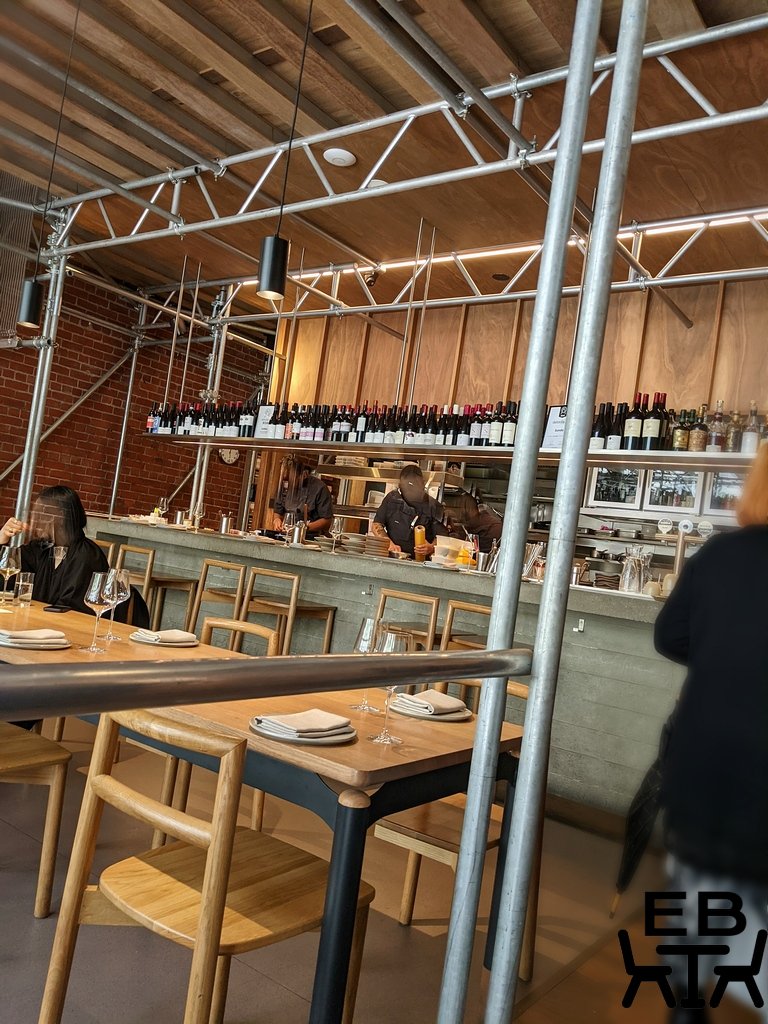
It is a larger area than you expect when you first walk in as well, with more tables on an upstairs level. The large glass windows at one end let light in and give you a view out to the street below.
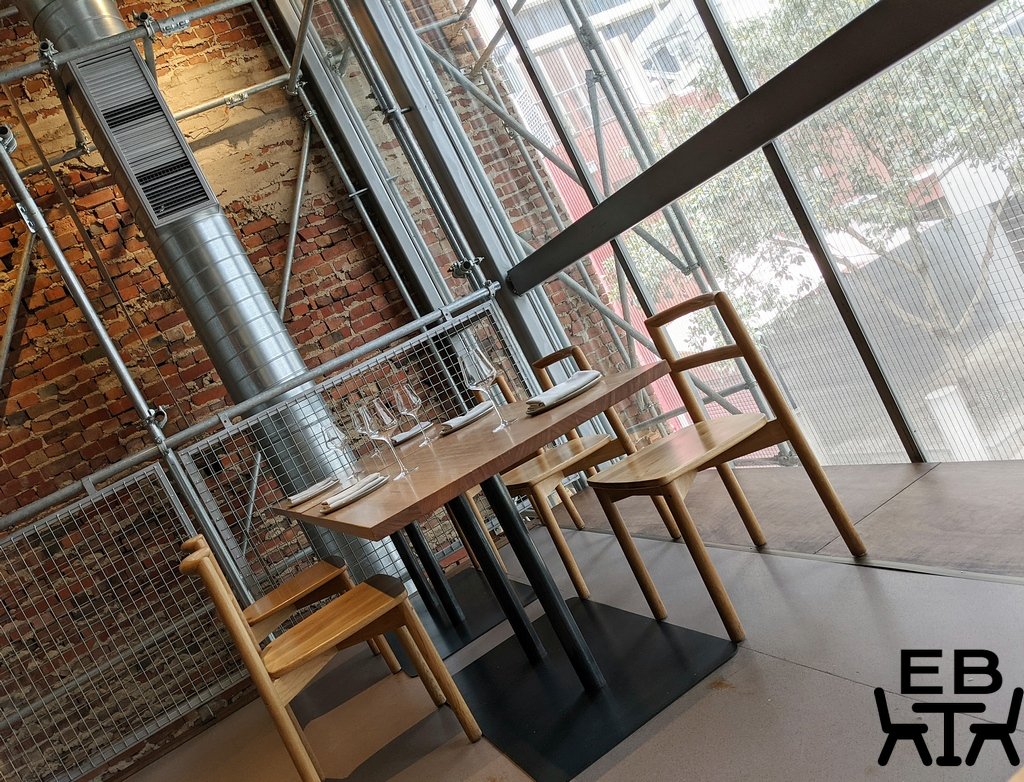
They only offer a set menu of dishes, with optional add-ons. That suited us fine, as it removed the issue of having to choose between items and the accompanying FOMO. The printed menu, on a single sheet, was laid across the plate on the table setting awaiting each diner. As seems pretty customary at modern eateries now, the menu had a single line of the key ingredients for each dish, without preparation details to give you further clues as to what you would get. Even from those, you could see the use of both Asian and native Australian elements.

The first few dishes were served together to be shared.
Globe artichoke, bush tomato, smoked coconut, caviar.
This was a very hands-on starter dish. We were told to peel open the artichoke, and use the leaves themselves as a scoop to pick up the dip, then eat it together with the pulp at the base of the leaf (but discarding the leaf itself, rather than attempting to eat it as well). The artichoke pulp itself didn’t taste like much, but the mixed components of the dip were hearty.
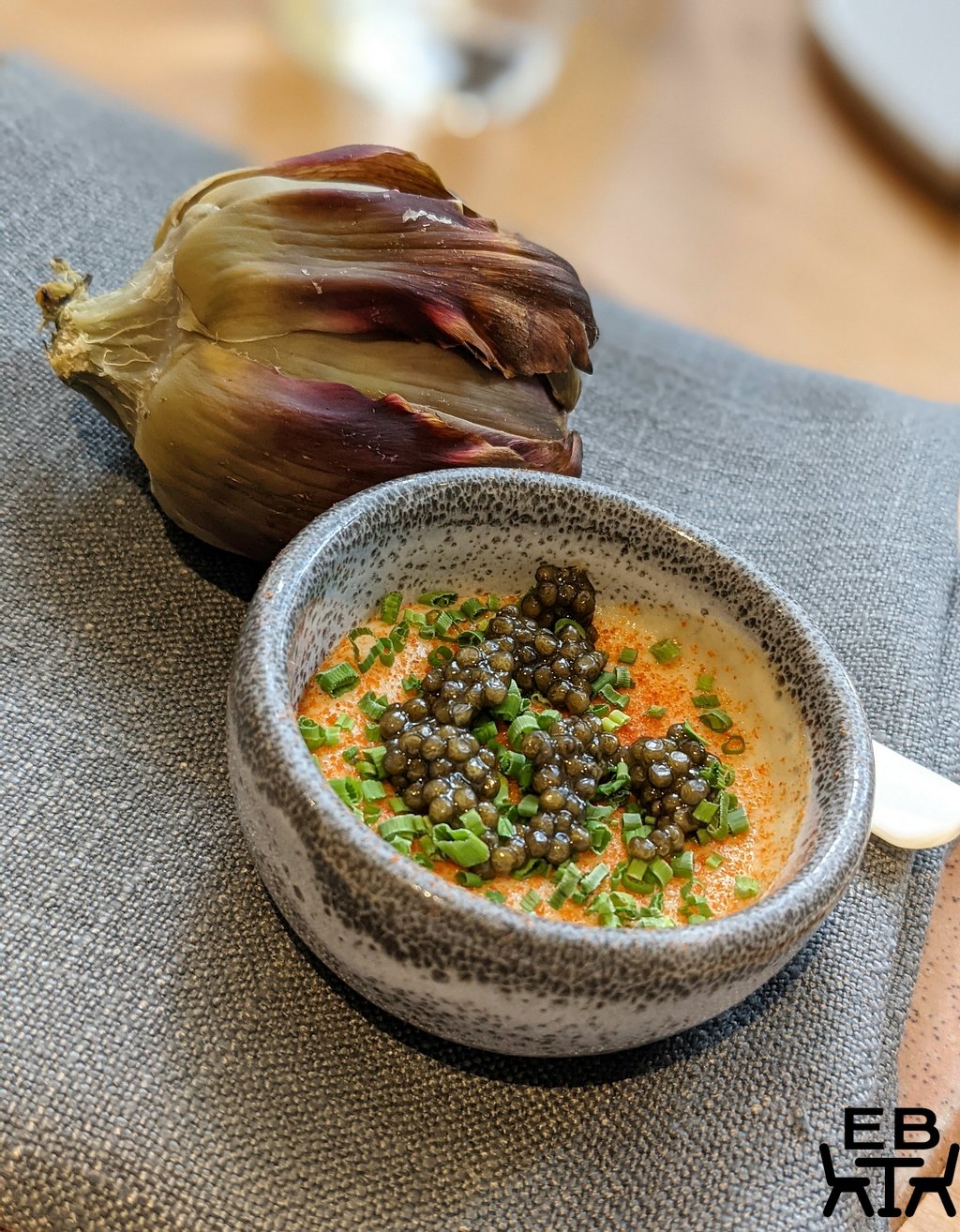
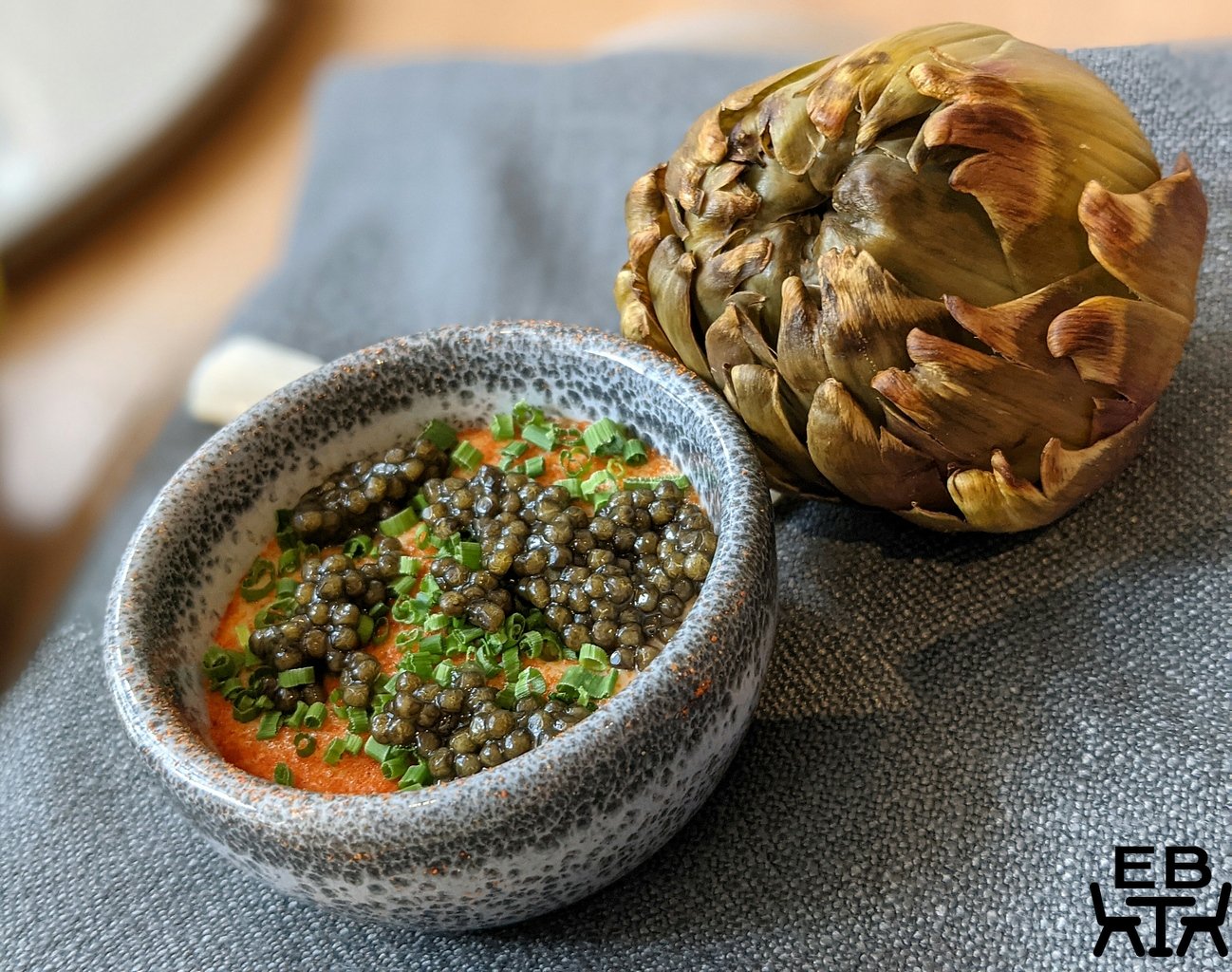
Gado gado, sunflower, kakadu plum, macadamia satay.
This was quite different from expected. Gado gado is usually a vibrant mix of colourful vegetables, with a tangy, sweet, and spicy peanut dressing. Here, it was served as a much more muted plate, with strips of vegetables around a sand-beige dip. It was nutty, but was more restrained than the usual zing gado gado carries.
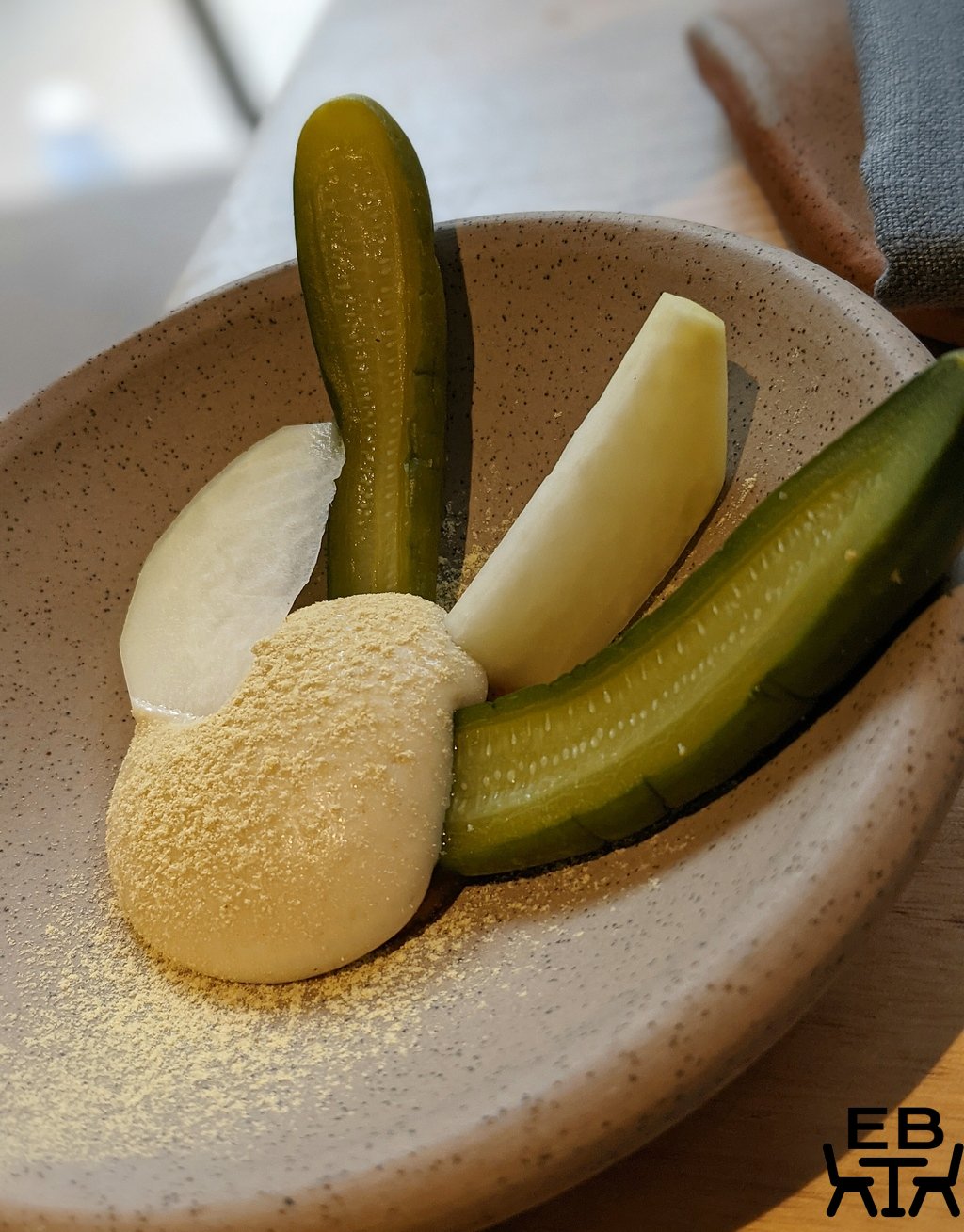
Rice paper roll, tuna belly, nuoc cham, pepperberry.
These were presented like maki rolls, with a layer of seaweed under the rice paper skin. The flavours were Vietnamese though, from the nuoc cham dressed tuna. These were a one mouthful hors d’ouvre per person.

“Otak otak”, spanner crab curry, finger lime, rice crisps.
This was the most flavourful of the starters. Instead of the usually firmer, flat slab of fish cake, this was, in both presentation and texture, a richer rendition of otak-otak. The presentation retained the banana leaf base and the orangey hue typical of the traditional dish. It was, however, a loftier brick, with neat edges. It had a soft, set custard texture, and carried deep seafood flavours. The rice crisps were also a smart play on the steamed rice otak-otak would typically be eaten with.

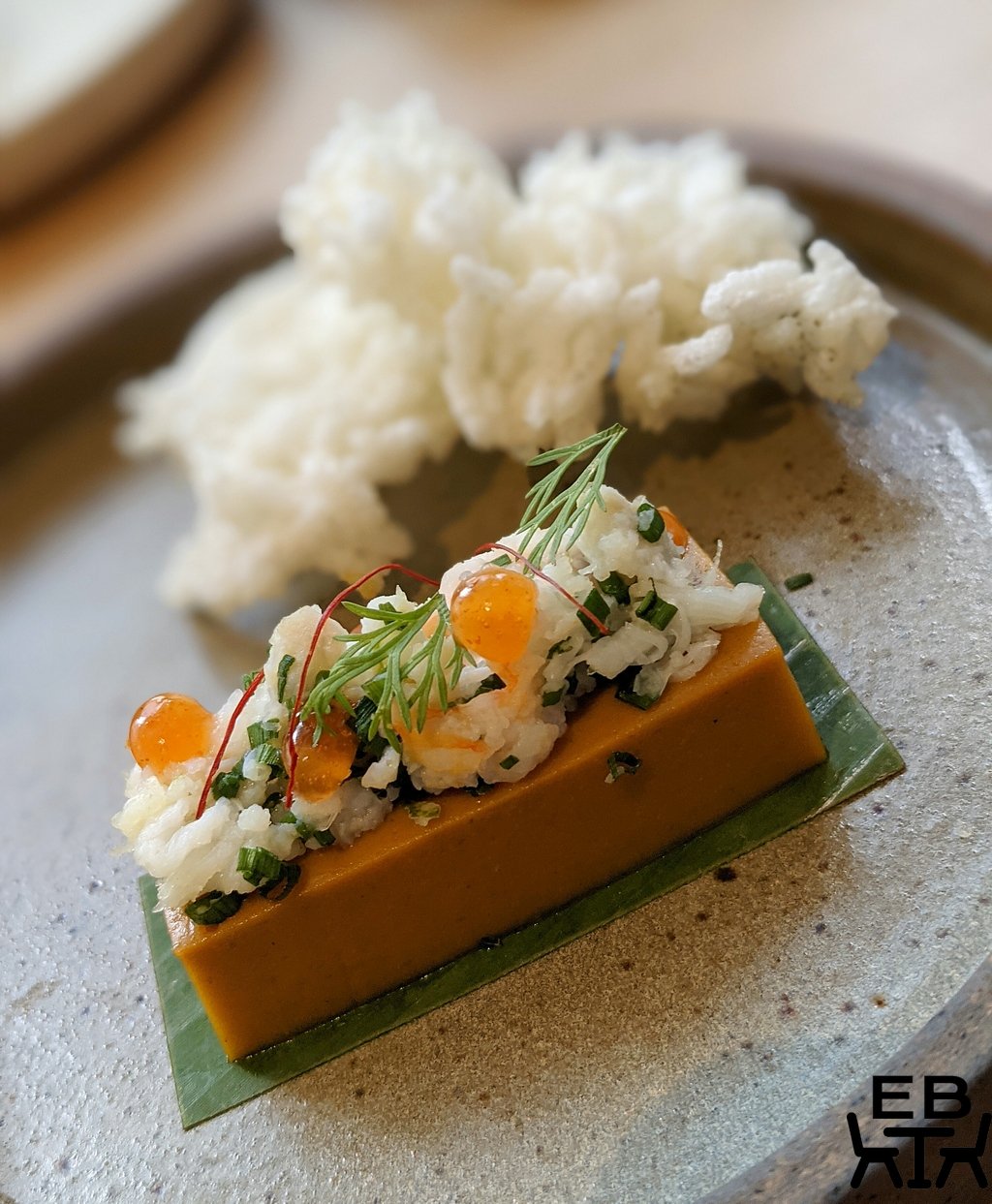
Scallop mosaic, taro stem, green apple, river mint.
This was intricately plated, in a way that reminded us of kintsugi, the Japanese art of mending pottery by knitting the seams with golden lacquer. The flavours here were lighter, which suited the scallop well.

Potato waffle, salmon roe, roasted chicken, muntrie jam.
The heart-shaped waffle had a more Scandinavian than Southeast Asian or Australian bent, but it made for a cute plate. The roasted chicken broth was hearty and a concentrated chicken goodness. The muntrie jam added an unexpected bright berry note to it.
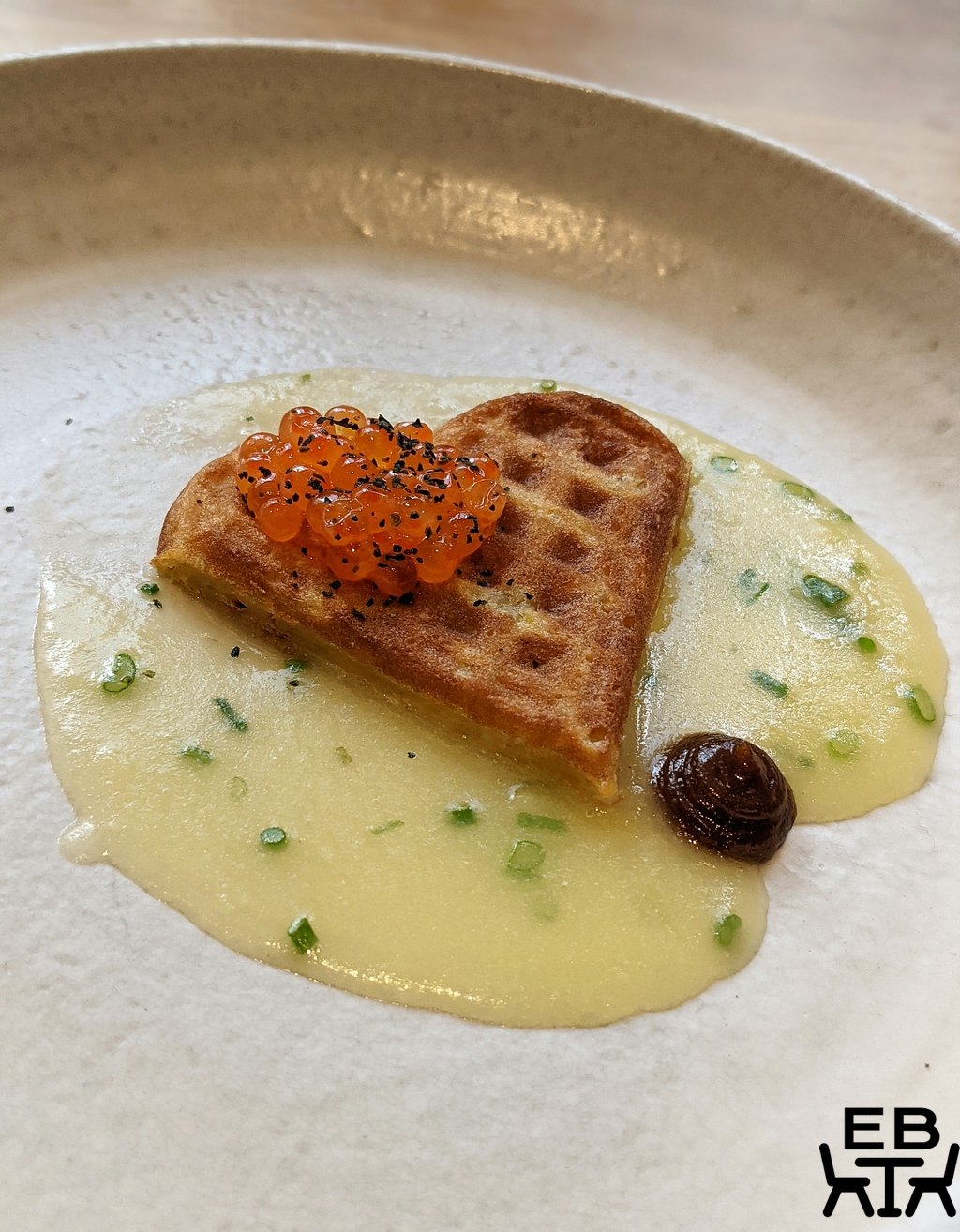
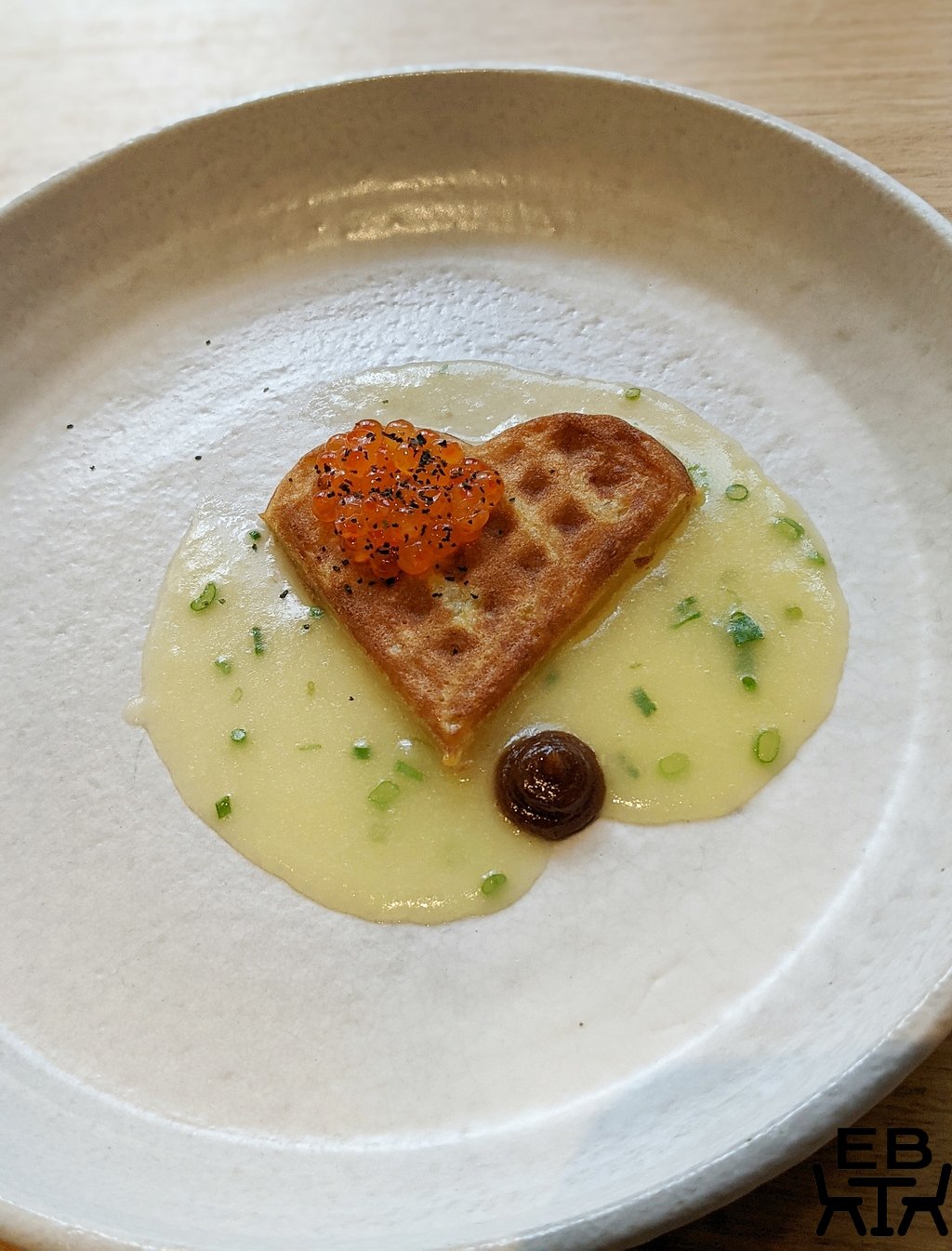
David Blackmore wagyu, brioche miso, sunrise lime, enoki.
This looked like the clumps of enoki mushrooms were the star of the dish, but they craftily concealed the slices of wagyu beneath. The miso broth was light, with a hint of sweetness from goji berries (also frequently used in chinese soups).
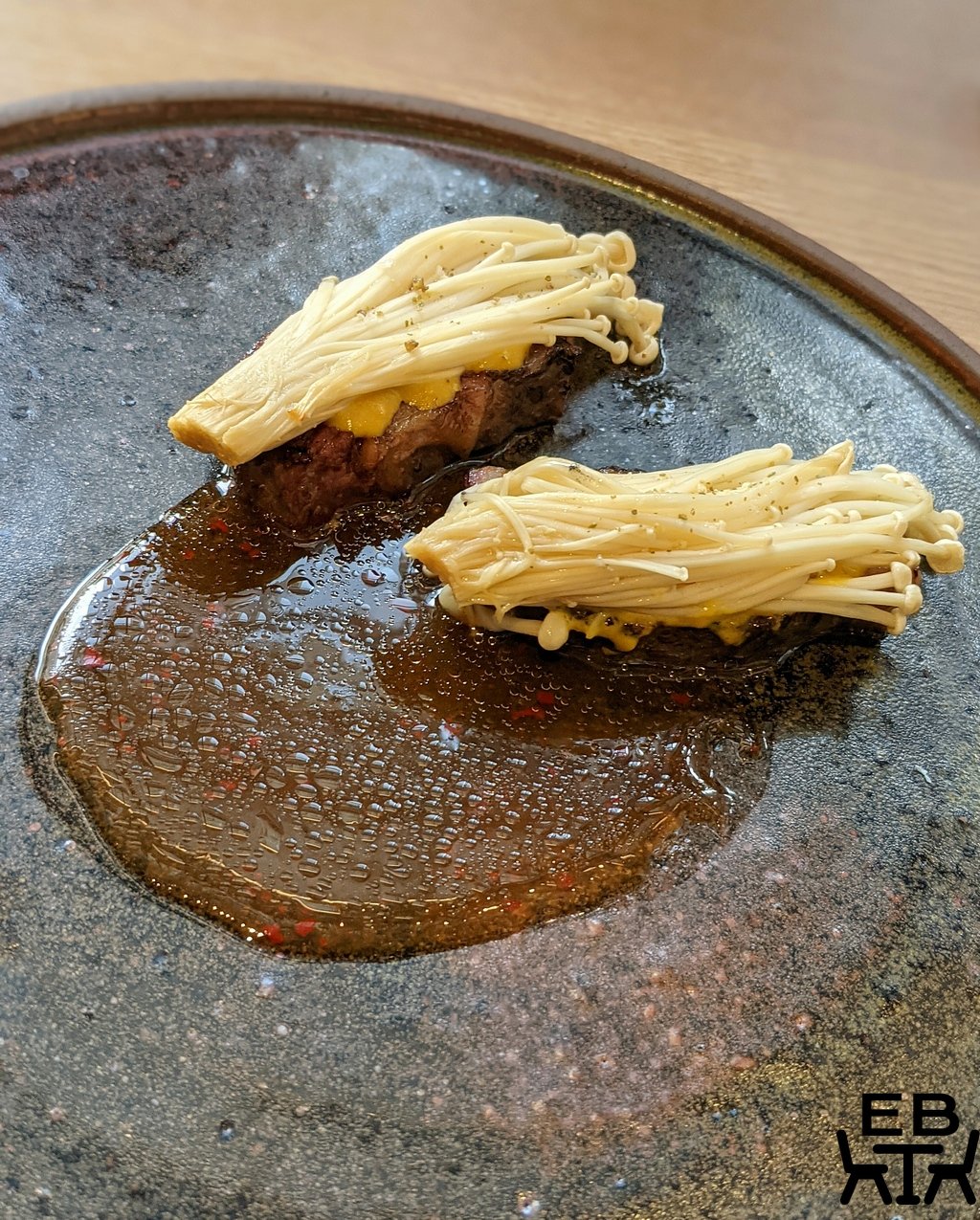
Bone marrow, Davidson plum, soybean shoots, nasturtiums.
Baked rice, okra, fermented saltbush, warrigal greens.
Though listed separately, these two were actually meant to go together. The baked rice was served in a bowl, with visible browned surfaces, as you would get from a claypot rice (the crispy best bit), and topped with the okra mix. Beansprouts and nasturtiums hid the actual marrow in the split bones from view, but the marrow was meant to be scooped out of the cavity and mixed in with the baked rice. Despite not looking that photogenic once taken out (it is quite fatty), it added richness to the rice when had together.
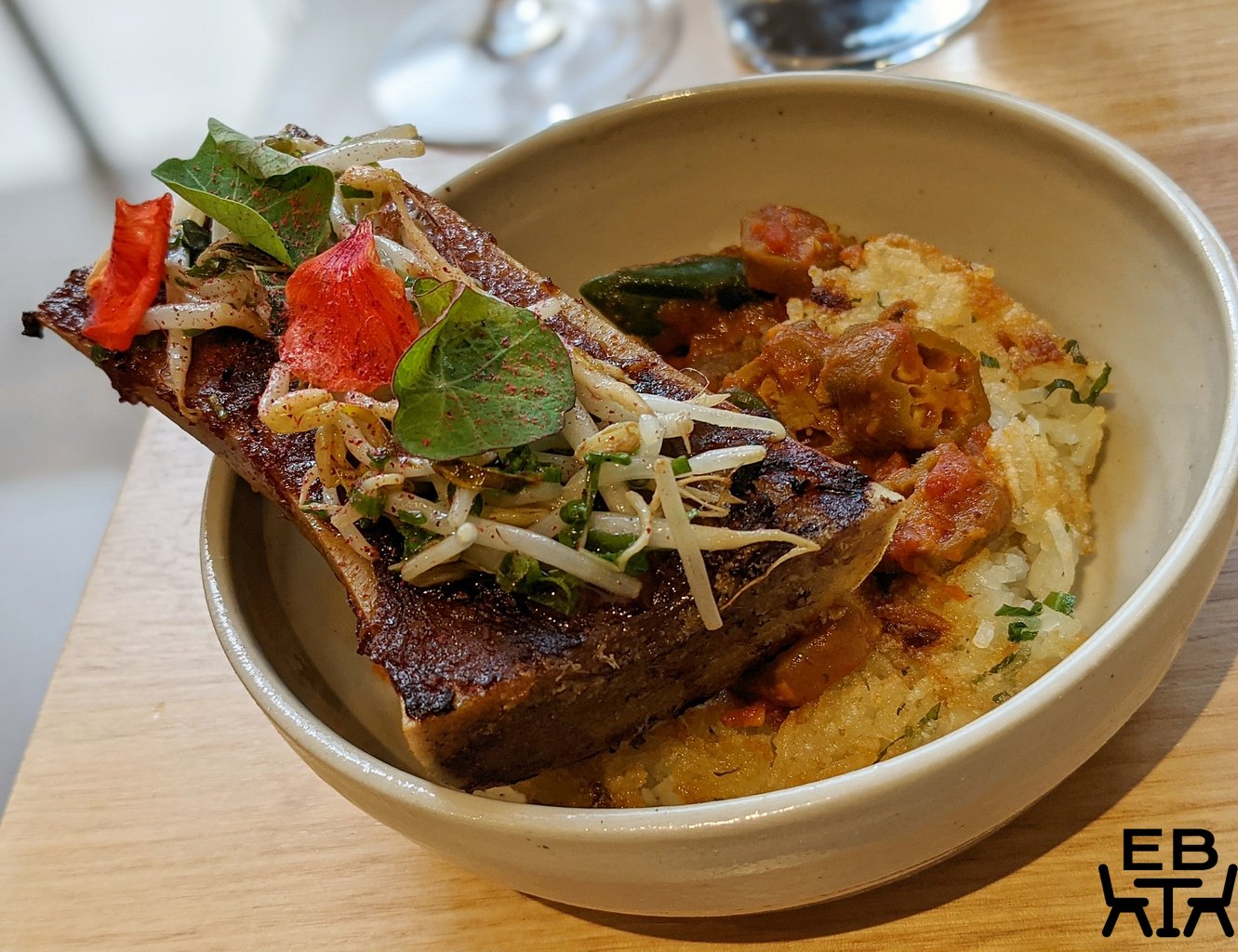
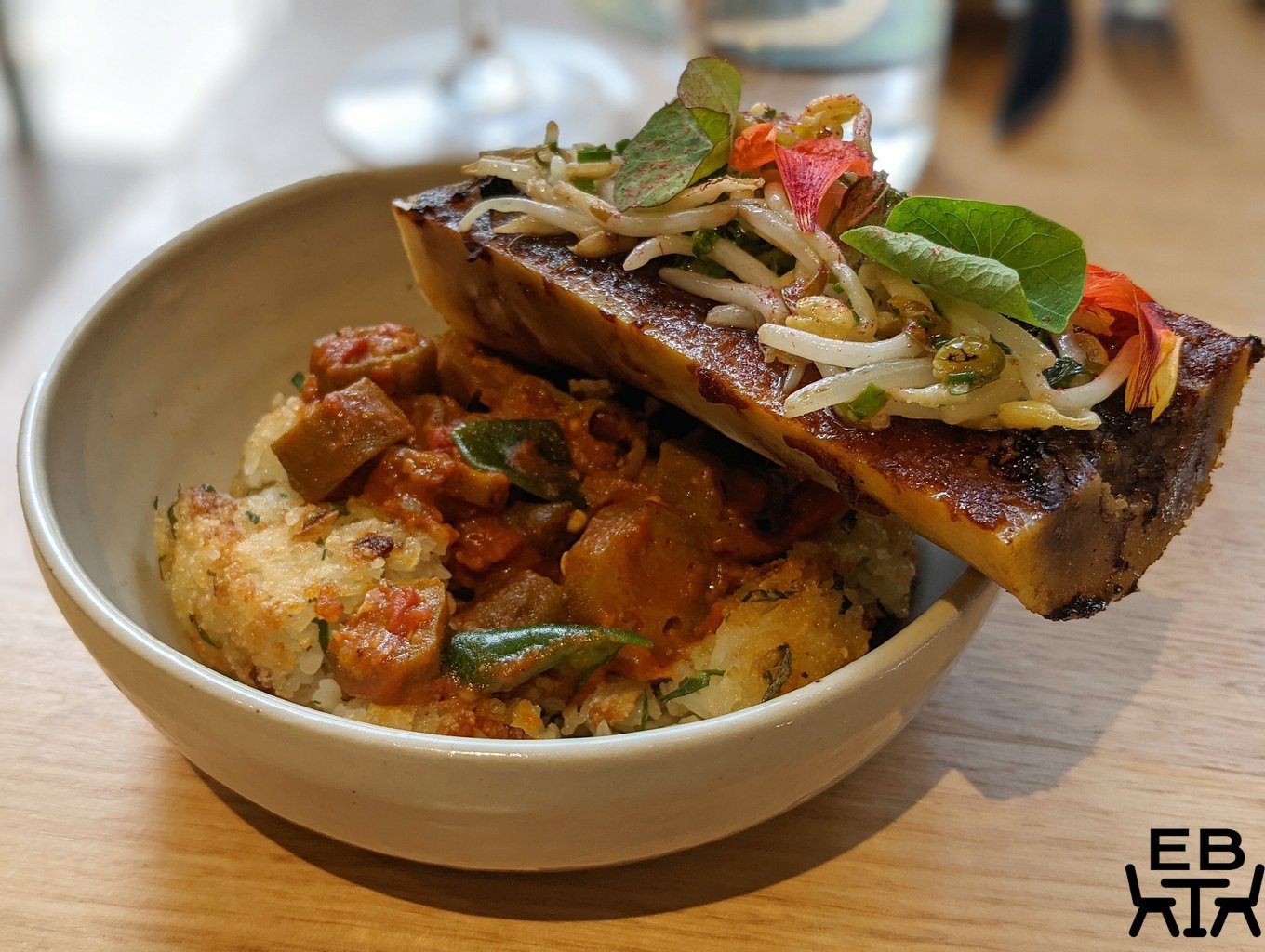

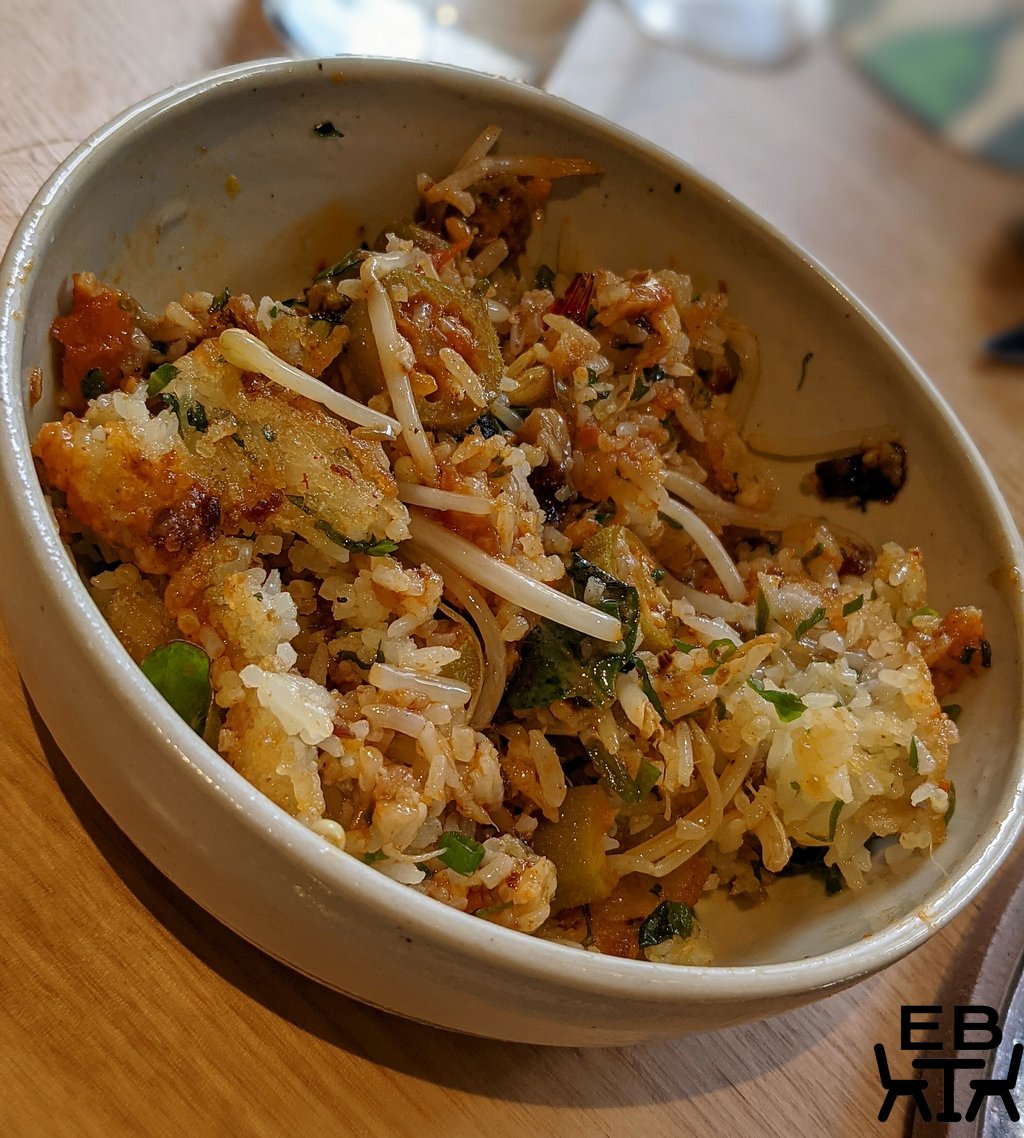
Young coconut, pineapple, lemon myrtle, kaffir lime.
This was a dessert with a lovely mix of tropical flavours that complemented each other. The sheet of supple coconut jelly was reminiscent of the texture of coconut flesh. It was fresh, but avoided veering too far into tart tastes.
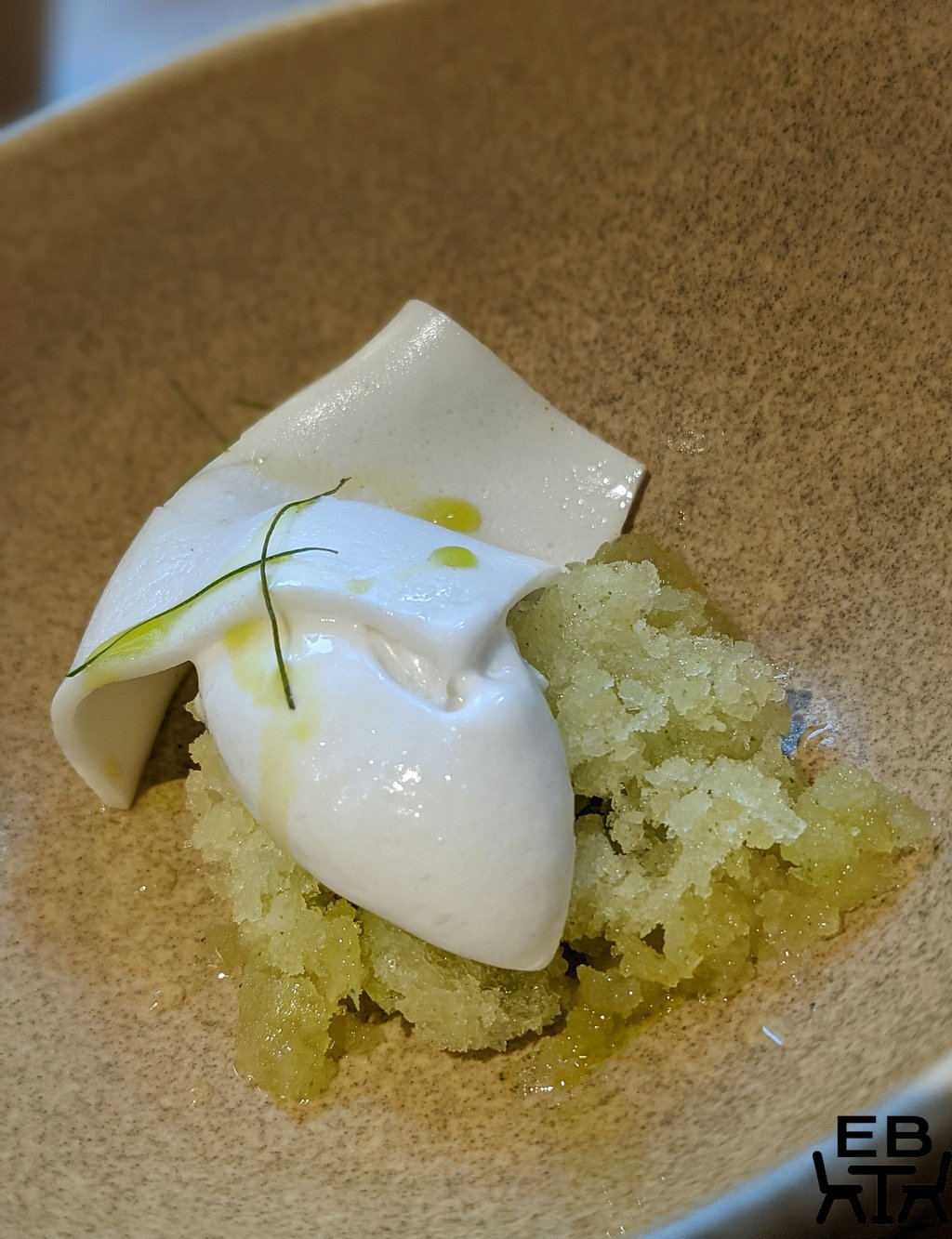

Jasmine rice, jackfruit, white chocolate, geraldton wax.
We appreciate multiple dessert courses. This had the more chocolatey flavours some people are more used to for their desserts. The puffed rice, peanuts, and praline added different types of crunch as well as varying sweet-savoury profiles. The jackfruit flavour was deftly tempered in the ice cream so that it did not overwhelm those who might be new to it.
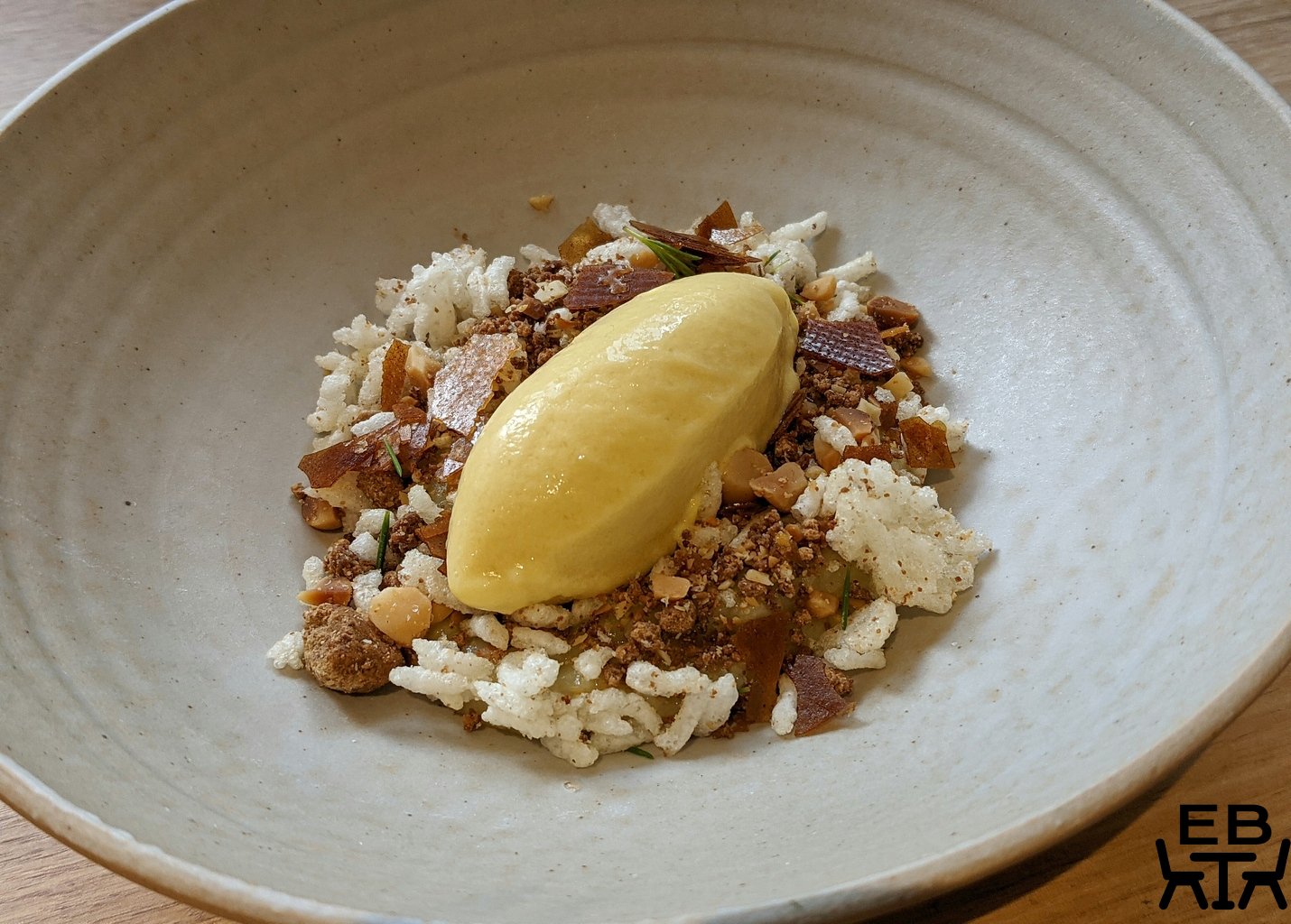

Lamington canelé, pandan, desert lime.
This was a lovely finish to the meal. The canelés had just the right texture, with a solid crunch on the outside and a moist spring on the inside. There was definite pandan flavour in it, and the desert lime piped on top was a bright zing.
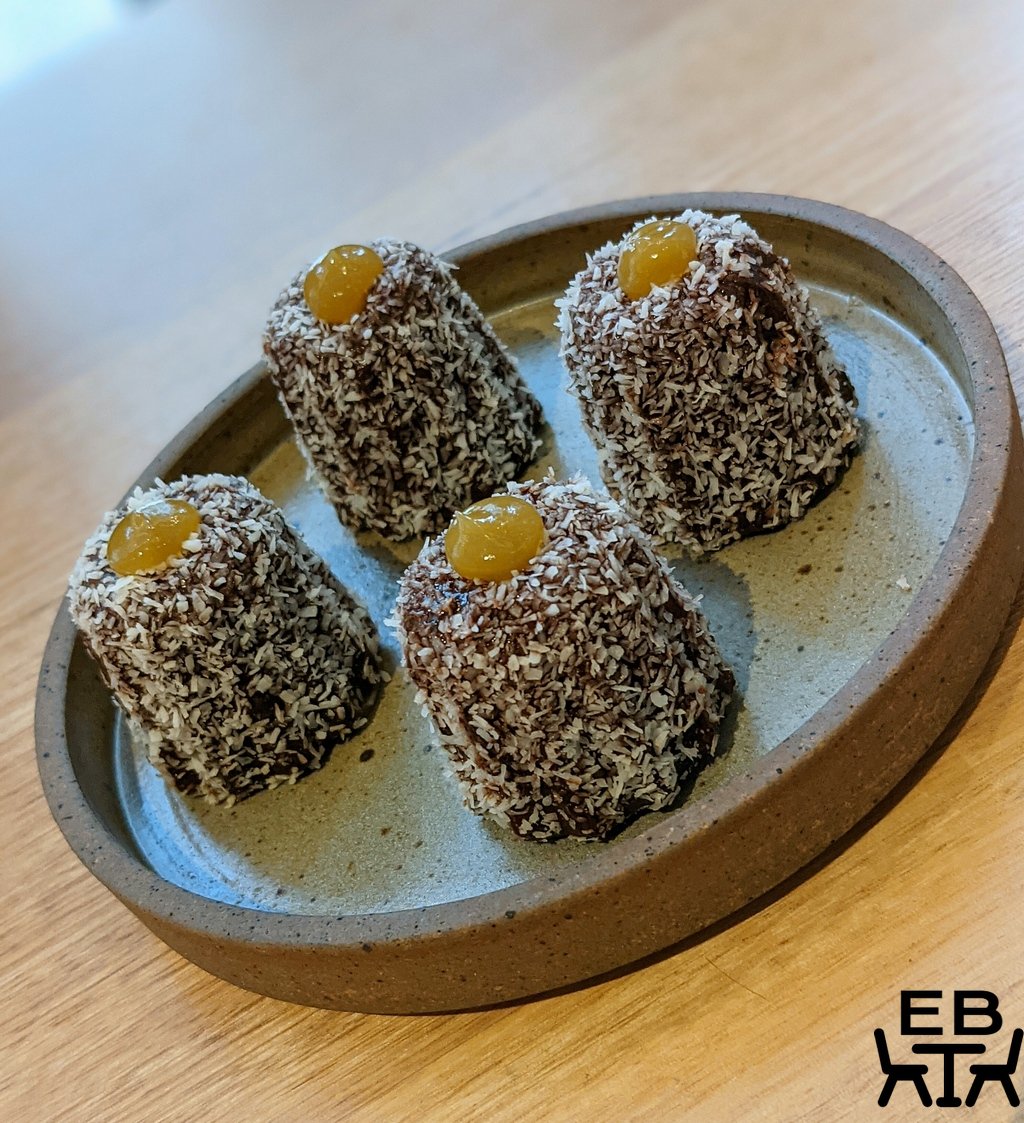
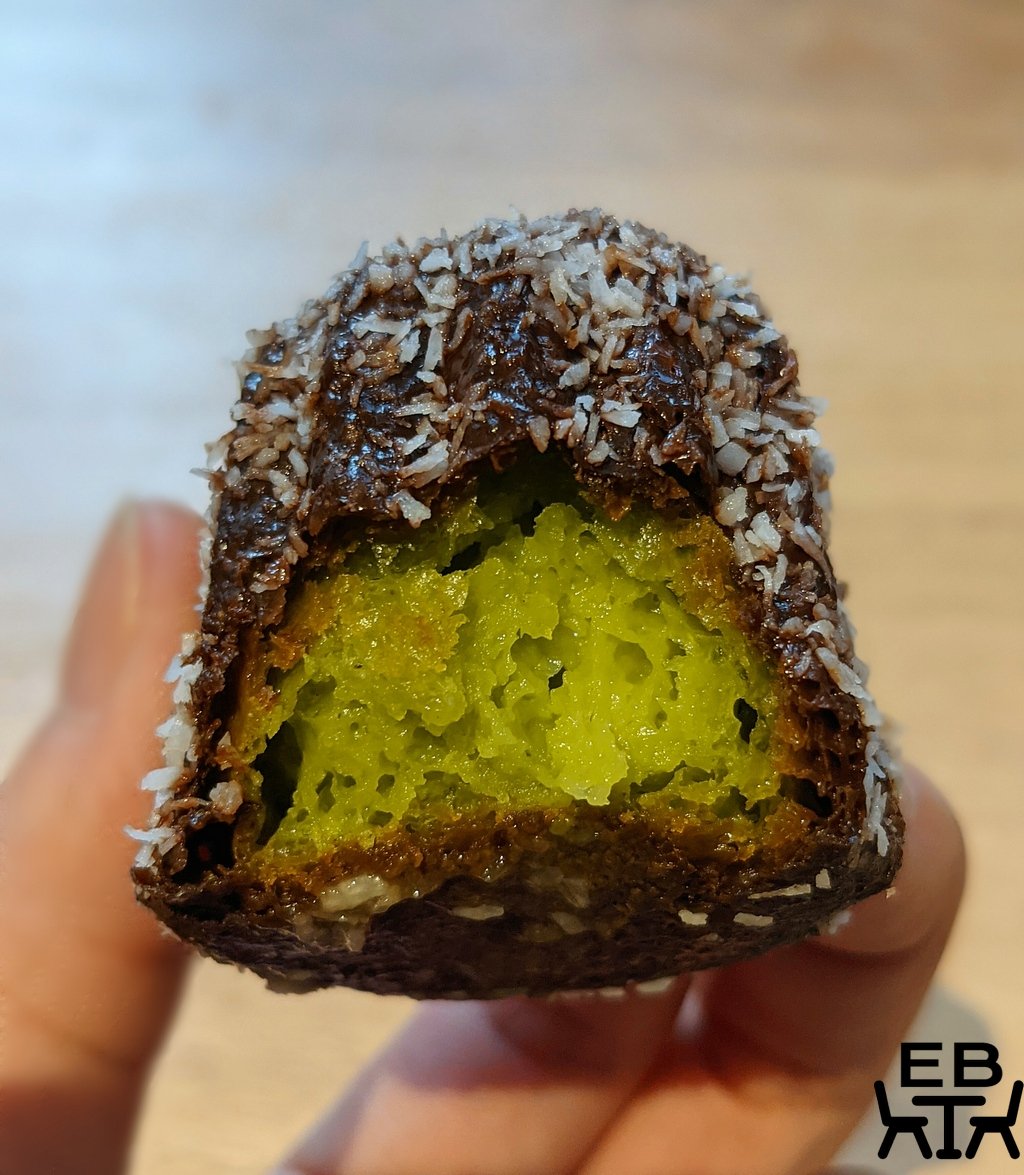
All in all, the meal at Sunda was certainly different from what you might find elsewhere. We didn’t necessarily love all the dishes, but there were some very tasty results from some of their culinary experiments. It is a good example of modern cuisine, starting with a solid foundation of the classic dishes, and then putting a new angle on them. Despite the many listed dishes, because of the dainty serving sizes, we didn’t leave full. Perhaps that was the intent, but we felt like we wanted a little more for the $130 per person.
Scores:
Food: 3/4
Setting: 1/2
Service: 1/2
Total: 5/8
Price point: $130 per person.
Value: Probably okay.
Details:
Address: 18 Punch Lane, Melbourne
Phone: 03 9654 8190
Website: Sunda Dining
